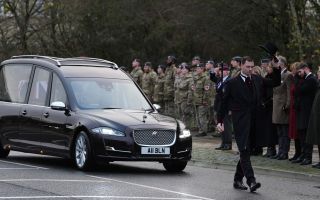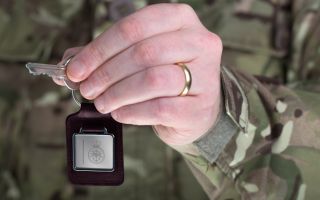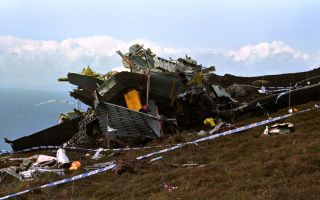What are the rules for flying your drone in airspace near to military bases like Cosford?
Drones can be a contentious issue if they are flown without a licence or in out-of-bounds areas like military airspace.
Last month, several "small unmanned aerial systems" were spotted over three US airbases in East Anglia, which led to around 60 British troops, including counter-drone specialists, deploying to help defend the bases.
A drone sighting at Wright-Patterson Air Force Base in Ohio forced officials to close the airspace at one of the largest US Air Force bases in the world.
As more members of the public own and have access to drones, and with many being gifted this Christmas, there are increasing incursions as they are flown in restricted areas, like military-controlled zones.
Flight Lieutenant Jamie Jenkins, RAF Cosford's Senior Air Traffic Control Officer, says a drone could shut down a runway.
"You're not sure where they're going to go next, they haven't got a flight plan, they haven't got a prescribed route that we're aware of.
"Therefore, they're unpredictable in nature.
"So the safest thing for us to do in most scenarios would be to stop what we're doing, which is obviously not what we want to do."
RAF Cosford's no-fly zone extends roughly two miles, which means many local residents will not be able to put a drone up, even in their gardens.
Flt Lt Jenkins says sticking to exclusion zones could prevent severe incidents.
"Our primary concern would be a mid-air collision, which we call MAC.
"A mid-air collision, obviously, could be catastrophic in terms of its implications.
"But at the very least, a mid-air collision can cause a significant risk to life or injury.
"It could impose a risk to infrastructure, but also as well it can have financial and reputational impacts on the Air Force itself."
How close can you fly a drone to a military site?
Military bases are Flight Restriction Zones (FRZ).
An FRZ is a two-mile or 2.5-nautical mile radius cylinder that extends out from the base, with 1km x 5km 'buffers' on the runway approach and departure lanes.
It goes from ground level to 2,000ft and it is against the law to fly a drone of any mass or size within it.
The RAF advises a drone operator that if they see or hear an aircraft approaching, they should immediately drop their drone as low as possible.
With permission, you may be able to fly your drone within an FRZ – applications can be made by following the instructions under flying info of the station you wish to fly near.
The best advice is, if you get a drone for Christmas, check out the Civil Aviation Authority website for the latest drone guidelines.









